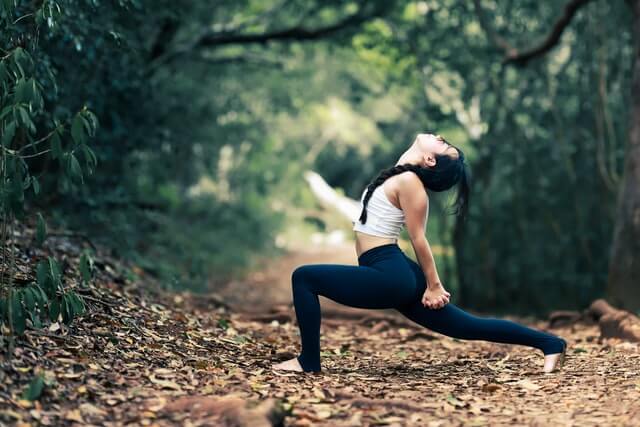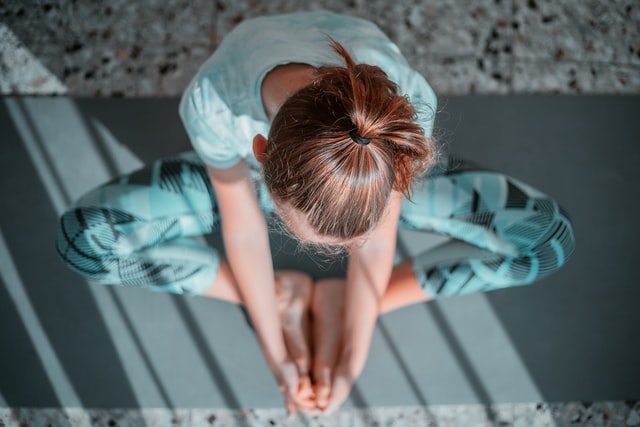Mindful Movement and Its Benefits
Mindful movement is a type of mindfulness practice that involves paying attention to your mind, breath, and body movements while engaging in a physical activity. Like all forms of mindfulness practice, the task is to increase awareness of the present moment without judging your experience.
When thinking of mindfulness, many people conjure up an image of a formal, sitting meditation on a cushion. While this type of practice is very common, it is just one of the ways to practice mindfulness. Mindfulness can be practiced formally and informally through a variety of methods and each type brings with it health benefits.
Throughout my work as an anxiety therapist in Rockland County, NY, I often incorporate and recommend mindfulness as a way to help clients reduce stress and manage symptoms.
Benefits of Mindful Movement
In a world where daily stress and pressures are increasing, finding positive ways to refocus our energy is imperative. Research shows that physical activity has the potential to decrease risk factors for many health issues and diseases. Moreover, regular physical activity and body movement also aids in the prevention and management of many illnesses.
In the mental health field, mindfulness practice has been associated with reduction in stress, anxiety and improvements in mood. In this way, we can see how mindful movement may be a great tool to learn.
One of the best parts about mindful movement is that it can be performed anywhere and at anytime. You do not need special equipment or setup. This makes it convenient and available to most everyone.
Mindful movement helps increase awareness to areas of your body that you need to attend to. Applying intentional focus to your muscles and flow of movement provides great information you can use. You may notice the tension and stress your body is carrying. Learn which movements feel difficult or uneasy for you. Become observant of movements that are calming and more enjoyable.
The intention here is to observe the sensations as they arise. Be careful not to judge your body for its success or pains. Rather, observe the sensations that are present. Acknowledge the presence of your natural thoughts and emotions. Then, return your attention back to your breath and continue practicing mindfulness.
Remember, it is the practice of awareness that brings health benefits and increases the mind-body connection. How well or how long you perform this activity is not the main goal. Be kind to yourself and do what you can.
3 Mindful Movement Activities To Reduce Stress
Using mindful movement for the purpose of stress reduction is possible and can be added to any self-care routine. The type of physical activity you choose is entirely your choice. Starting with an exercise that is already in your repertoire will increase the chance that you will practice. The more consistently you practice, the higher probability you will notice a reduction in your stress levels. Three popular examples of activities to try are provided below.
Mindful Movement Yoga
This activity is intended to increase awareness of the mind-body connection. You may have practiced some yoga in the past.
The traditional yogas involve movements, changing yoga positions, and paying attention to your breath.

Mindful movement yoga brings a unique component in that you apply specific yoga movements and practices. However, the intention is to simply observe and be in the present moment. Focus on observing the flow of your breath and body sensations as you are moving through each yoga pose.
It will be natural to also have an increased awareness of thoughts and emotions. Acknowledge them and bring the focus back to your breath and body movements.
Mindful Walking
Walking while practicing mindfulness at the same time. When we walk, it is usually with intention and purpose to get to a certain destination. When walking for exercise, the intention may be to walk a specific amount of time or amount of miles. You may may intentionally select a style of walking such as brisk-walking or run-walking if you want to increase your heart rate.
To use walking as a mindful movement means that you abandon these intentions. The commitment to this form of mindful walking is to exist in a state of being and awareness. The intention is not to go anywhere specific. There is no predetermined destination or place you need to get to. The goal here is to walk while maintaining awareness on the present moment.
There are no rules about where you can walk. For example, you choose a room in your house where there is enough space to walk without bumping into anything. You can also choose to go outside to a safe area without much traffic or interruption.
Mindful Walking and Building Awareness
To walk mindfully, pay attention to your senses as you walk. Observe your feet as they hit the floor. What sound do they make? If you are barefoot, can you observe the sensation of the wood, tile, or grass? How does this feel?
What other senses are available to you? Can you observe the sounds in the area where you are walking? If outside, do you hear the birds, cars, wind? If you can see and use your vision, what is around you? What colors can you observe in the environment?
What other body parts are you engaging as you walk? Can you sense the movement of your arms and hands? What does that feel like? Are they swaying gently at your side? Or are they swinging briskly and feeling heavy?
Ask yourself, “What is here, right now in this moment?” What do you notice about your breath?Is it light and steady or quick and shallow? Bring attention to your breathing as you walk. What observations can you make?
Mindful Exercising
Any form of physical exercise can be practiced mindfully. For example, if you are doing cardio, you can bring mindful attention to your breath, speed, endurance, and energy levels. What muscle groups are engaged in this activity and how do they feel?
If you are lifting weights, notice the heaviness and feel of the weights as you lift. What muscle groups are you using? Is your body feeling different than the day before? Are you aware of your breath as you are holding and lifting the weights? Do you experience any discomfort, desire to give up, or increase in adrenaline and motivation?
Mindful movement helps you stay presently focused. Whatever feelings or information come up for you during the exercise are valid and important aspects of your experience.

Mindful Movement Tips
- If your mind gets distracted and wanders to other thoughts, gently bring it back to your breath and body movements. This is ok and will happen. It is not a sign that you are failing at mindfulness. When you notice your thoughts have wandered, return your attention to mindful movement and continue your practice.
- If you notice pain or discomfort, observe it and stop. You do not need to push through pain or strive for your body to do more than it can in that moment. If you find that there is a medical concern or physical ailment that needs attention, do discuss it with your medical provider. It is not uncommon for mindful movement to alert people to previously neglected areas of the body. Take care of yourself and your body. Be aware of what your body needs and don’t push past its limits. Always seek medical guidance as needed.
- Be kind to yourself. You may find that you enjoy some of the mindful movements. You may even choose to continue doing an exercise that you find particularly pleasant and stress-reducing. Or, you may discover that the condition of your body may not be what you would like. Your sensations may not be pleasant. Thank your mind and body for cuing you into the things you want to change. Avoid criticizing and judging your energy levels or physical abilities.
- Increase frequency. The benefits of mindfulness practice and mindful movement are observable over time. Engaging your body and practicing as often as you can will provide you with more of the health and stress relieving benefits than if done sporadically. Consider scheduling mindfulness throughout your day.
- Practice variety. Mindful movement can be applied to almost every activity. Yoga, horseback riding, tai chi, dancing, cycling, hiking are some examples. Each activity brings with it a fresh opportunity to practice awareness in the present moment.
The Counseling Perch Mental Health Counseling, P.C. offers therapy to residents in Rockland County, Westchester County, and all around New York State via online video platform. Call to schedule an appointment.







